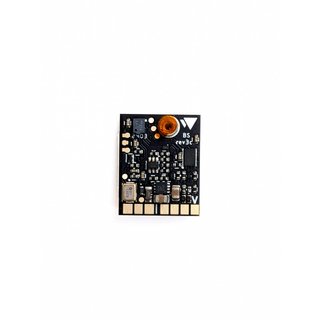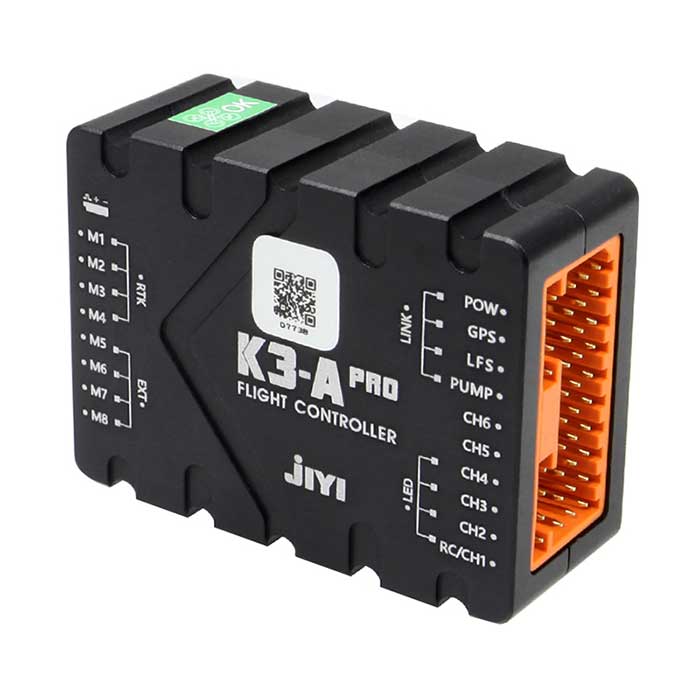Discovering the Duty of Drone Flight Controllers in Enhancing Trip Stability and Navigating Effectiveness
The innovation of drone innovation has considerably raised the importance of trip controllers, which serve as the mind of these airborne vehicles. By incorporating real-time information from a range of sensors, trip controllers boost flight security and navigation effectiveness, ensuring that drones can run smoothly even in intricate environments.

Comprehending Flight Controllers
Flight controllers are indispensable components in the performance of drones, functioning as the brains that maintain and manage trip operations. These innovative devices procedure information from numerous sensing units, including accelerometers, gyroscopes, and GPS, to make sure that the drone keeps its intended trip course. The trip controller interprets this data and carries out commands based upon pre-defined algorithms, enabling the drone to react to environmental changes, such as wind or challenges.
The key function of a flight controller is to keep security during trip. It achieves this by making real-time adjustments to the drone's motors and control surface areas, ensuring equilibrium and control. In addition, modern-day flight controllers integrate sophisticated functions such as waypoint navigating, enabling automated trip courses and boosted operational efficiency.
Understanding the architecture of flight controllers is important for both enthusiasts and specialists. As modern technology developments, trip controllers have come to be more compact and capable, incorporating synthetic knowledge to adjust and improve decision-making procedures to intricate flight scenarios.
Secret Parts of Flight Stability
Achieving ideal flight stability in drones counts on a number of vital components that work in performance to ensure controlled and smooth procedures. Central to this stability is the trip controller itself, which refines data from various sensors to preserve the wanted flight perspective. This includes accelerometers and gyroscopes that determine motion and positioning, allowing for real-time changes to the drone's position.
One more essential component is the electronic speed controllers (ESCs), which manage the power supplied to the electric motors. By carefully adjusting motor rates in action to trip controller commands, ESCs assist keep equilibrium and combat disturbances brought on by wind or unexpected motions.
Furthermore, the layout of the drone's structure plays a crucial function in trip security. A well-structured structure decreases resonances and enhances the overall aerodynamic account, adding to smoother flight characteristics. Ultimately, the assimilation of sophisticated algorithms within the flight controller help in anticipating adjustments, making certain a responsive and versatile trip experience.
Together, these components create a natural system that enhances a drone's security, enabling for specific handling and boosted performance in different flight problems.
Navigating Performance Methods
Effectiveness in navigating is necessary for maximizing drone procedures, particularly in intricate environments. Efficient navigation methods enhance the capability of drones to pass through tough terrains and prevent barriers, thereby improving operational efficiency and security.
One famous technique is the application of sophisticated GPS and inertial dimension systems (IMUs) that provide precise location tracking and alignment data. These technologies enable drones to determine ideal flight paths in real-time, taking into account various variables such as wind problems and potential obstacles.
One more method includes making use of formulas for path preparation and optimization. Formulas such as A * and Dijkstra's formula can be released to establish one of the most effective path while lessening power usage and flight time. Integrating machine knowing designs can enable drones to adaptively learn from their settings, boosting navigating capacities via experience.

Effect On Autonomous Drones
The combination of innovative navigation techniques has profoundly transformed the capabilities of autonomous drones, enabling them to operate with higher autonomy and precision. SparkNavi drone flight controller and GNSS/INS made in taiwan. These enhancements are mainly attributed to sophisticated flight controllers that use real-time information processing and sensor combination, allowing drones to browse intricate atmospheres effortlessly
The influence on self-governing drones prolongs past mere navigating; it encompasses boosted challenge avoidance, boosted security throughout vibrant conditions, and enhanced mission reliability. By leveraging formulas that include artificial intelligence and man-made intelligence, drones can adjust to altering conditions, making notified choices that maximize their flight courses while decreasing dangers.
Furthermore, the implementation of durable trip controllers has promoted the execution of complicated tasks, such as airborne evaluations, distribution services, and farming surveillance, with very little human treatment. This ability not only streamlines operations yet likewise minimizes human error, consequently improving total safety and security.
Because of this, the functional scope of self-governing drones has actually increased dramatically, making them essential devices in numerous sectors. Their capacity to carry out efficiently in varied circumstances highlights the important role that progressed flight controllers play fit the future of unmanned aerial systems.
Future Fads in Flight Control
Often, innovations in trip control technology are poised to redefine the landscape of drone operations in the coming years. Arising fads suggest a considerable change in the direction of enhanced synthetic knowledge (AI) assimilation, making it possible for flight controllers to refine real-time data more effectively. This advancement will certainly facilitate enhanced decision-making capacities, allowing drones to adapt to dynamic environmental conditions autonomously.
Furthermore, the application of machine discovering algorithms is expected to enhance predictive upkeep, consequently reducing downtime and extending the lifecycle of drone components. This proactive approach to maintenance will be critical as drone applications increase across various sectors, from agriculture to logistics.

.png)
Finally, improvements in safe interaction procedures will certainly deal with security and regulatory worries, making sure that imp source drones can operate perfectly in overloaded airspaces (SparkNavi drone flight controller and GNSS/INS made in taiwan). Collectively, these trends direct in the direction of a future where flight control systems are not just smarter and a lot more reliable but also capable of operating safely in a significantly integrated airspace
Verdict
To conclude, drone trip controllers are indispensable to improving flight security and navigating performance with the innovative processing of sensing unit information. By maintaining optimal trip perspectives and employing sophisticated formulas for path optimization and obstacle avoidance, these controllers substantially add to the freedom and operational safety and security of drones. As technology remains to progress, further advancements in flight control systems are expected, assuring enhanced efficiency and broadened capacities in the realm of unmanned airborne automobiles.
By incorporating real-time information from a selection try this website of sensors, trip controllers improve flight security and navigation effectiveness, ensuring that drones can operate smoothly also in intricate environments.Flight controllers are indispensable elements in the performance of drones, serving as the brains that manage and maintain trip procedures. In addition, modern flight controllers integrate sophisticated functions such as waypoint navigation, enabling for automated flight paths and boosted operational efficiency.
Central to this stability is the trip controller itself, which refines information from numerous sensing units to maintain the wanted trip perspective.In final thought, drone trip controllers are important to enhancing trip security and navigation performance through the sophisticated handling of sensor data.